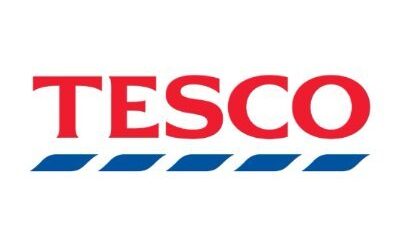Key Performance Indicators (KPIs) play a vital role in measuring the success and effectiveness of any industry, and the food industry is no exception.
As a dynamic and competitive sector, the food industry relies on various performance metrics to monitor and improve its operations, profitability, and customer satisfaction.
Whether you own a restaurant, manage a food manufacturing company, or operate a grocery store, understanding and leveraging the right KPIs can provide valuable insights into your business’s performance and help you make informed decisions.
This blog post explains importance of key performance indicators for food industry, essential KPIs for the food industry and discuss their measurement and tracking methods.
By the end of this post, you will have a comprehensive understanding of how KPIs can drive success in the food industry and empower you to achieve your business goals.
Let’s dive in and learn more about this
What are key performance indicators?
Key Performance Indicators (KPIs) are measurable values that organizations use to evaluate their progress towards achieving specific objectives or goals.
KPIs serve as quantifiable metrics that provide insights into the performance and effectiveness of various aspects of a business.
They help track performance over time, identify areas for improvement, and provide a clear understanding of whether an organization is on track to meet its targets.
KPIs can vary depending on the industry, organization, and specific goals. They can encompass financial, operational, customer-oriented, or quality-related metrics. The selection of KPIs is crucial as they should align with the organization’s strategic objectives and provide meaningful and actionable information for decision-making.
You can further read about: A step-by-step guide to develop key performance indicators
Importance of Key Performance Indicators for Food Industry
KPIs are of significant importance in the food industry due to several reasons:
- Performance Measurement: KPIs provide a means to measure and evaluate the performance of various aspects of a food business. Whether it’s sales and revenue, operational efficiency, customer satisfaction, or quality and safety, KPIs offer quantifiable metrics that help assess the success and effectiveness of different processes and initiatives.
- Goal Alignment: KPIs enable organizations in the food industry to align their activities and efforts with their strategic goals. By setting specific KPIs, businesses can ensure that their day-to-day operations are directly contributing to the overall objectives of the company. This alignment enhances focus, accountability, and a shared understanding of what needs to be achieved.
- Decision Making: KPIs provide valuable insights and data-driven information that support informed decision-making. By monitoring KPIs, food businesses can identify trends, patterns, and areas of concern, enabling them to make timely adjustments, optimize resources, and capitalize on opportunities. KPIs empower management to make decisions based on objective measurements rather than subjective assessments.
- Continuous Improvement: KPIs are instrumental in driving continuous improvement within the food industry. By tracking key metrics, businesses can identify areas for enhancement and implement targeted strategies to optimize performance. KPIs act as indicators of progress and help establish benchmarks, allowing organizations to set goals, track progress, and continually strive for higher levels of efficiency, quality, and customer satisfaction.
- Performance Evaluation: KPIs enable organizations to evaluate and compare their performance over time. By measuring performance against predetermined targets, food businesses can assess their achievements and identify areas that require attention or improvement. Regular evaluation of KPIs facilitates performance reviews, feedback, and a structured approach to performance management.
- Competitive Advantage: Leveraging KPIs effectively can provide a competitive advantage in the food industry. By monitoring and improving key metrics, businesses can differentiate themselves, enhance customer satisfaction, optimize costs, and ultimately gain a stronger position in the market. KPIs help identify areas where improvements can be made to surpass industry standards and meet evolving customer expectations.
Essential Key Performance Indicators for Food Industry
Among the most important key performance indicators for food industry, we identify sales and revenue, operational efficiency, customer satisfaction and quality and safety.
Let’s discuss each of KPIs in detail.
Sales and Revenue KPIs
KPIs of sales and revenue provide food businesses with critical insights into their financial performance, growth trajectory, pricing effectiveness, and customer value. By tracking and analyzing these metrics, organizations can make data-driven decisions to optimize their sales strategies, enhance profitability, and foster long-term customer relationships
Total revenue
Total revenue is a fundamental KPI that measures the overall income generated by a food business within a specific period. It represents the total sales revenue from all products or services offered. Tracking total revenue allows businesses to assess their financial performance and monitor the effectiveness of their sales strategies. By comparing revenue over time or against targets, organizations can identify growth trends, evaluate the success of marketing campaigns, and make informed decisions regarding pricing, product offerings, and market expansion.
Sales growth rate
The sales growth rate KPI measures the percentage increase or decrease in sales revenue over a specified period. It provides insights into the rate at which a food business is growing its sales volume. A positive growth rate indicates business expansion and increased market share, while a negative growth rate suggests a decline in sales. Monitoring the sales growth rate helps identify trends, assess the effectiveness of sales and marketing efforts, and guide strategic decision-making.
Average transaction value
The average transaction value KPI calculates the average amount of money spent by a customer per transaction. It helps measure the revenue generated from each individual sale. Tracking this KPI allows businesses in the food industry to assess the effectiveness of their pricing strategies, promotional campaigns, and upselling techniques. Increasing the average transaction value can contribute to higher profitability and revenue.
Customer lifetime value (CLTV)
Customer lifetime value represents the total net profit generated from a customer throughout their entire relationship with a food business. It takes into account the revenue generated from repeat purchases, customer loyalty, and the duration of the customer’s relationship with the business. CLTV helps businesses understand the long-term value of their customer base and the return on investment in acquiring and retaining customers.
Operational Efficiency KPIs
These KPIs enables food businesses to streamline their operations, reduce costs, and enhance profitability. By analyzing these metrics, organizations can identify areas for improvement, implement targeted strategies, and make data-driven decisions to drive operational excellence in the highly competitive food industry.
Food cost percentage
The food cost percentage is a KPI that measures the portion of total revenue spent on food and beverage costs. It calculates the ratio of the cost of ingredients and raw materials used to the total sales revenue generated. Monitoring this KPI helps food businesses assess their cost management and pricing strategies. A high food cost percentage may indicate inefficiencies in procurement, portion control, or menu pricing, leading to reduced profitability.
Labor cost percentage
The labor cost percentage KPI measures the proportion of total revenue that is spent on labor-related expenses, including wages, benefits, and payroll taxes. It helps businesses in the food industry evaluate the efficiency of their labor utilization and management. High labor cost percentages may indicate overstaffing or excessive labor costs relative to revenue.
Inventory turnover rate
The inventory turnover rate is a KPI that quantifies how efficiently a food business manages its inventory. It calculates the number of times inventory is sold and replaced over a specific period. A higher turnover rate indicates that inventory is being sold quickly, minimizing the risk of spoilage, waste, or obsolescence. Monitoring this KPI is crucial for optimizing inventory management, ensuring freshness, reducing carrying costs, and improving cash flow.
Employee productivity
Employee productivity is a KPI that measures the output or performance of employees within a given timeframe. It can be assessed by various metrics, such as sales per employee, units produced per hour, or orders fulfilled per shift. Tracking employee productivity allows food businesses to evaluate workforce efficiency, identify top performers, and address training or performance issues.
Customer Satisfaction KPIs
Customer satisfaction KPIs enables food businesses to build strong customer relationships, enhance loyalty, and drive repeat business. By analyzing these metrics, organizations can identify areas of improvement, address customer concerns, and create exceptional experiences that foster customer satisfaction and advocacy in the competitive food industry.
Customer retention rate
The customer retention rate is a KPI that measures the percentage of customers a food business is able to retain over a specific period. It reflects the level of customer loyalty and satisfaction. A higher retention rate indicates that customers are satisfied with the products, services, and overall experience provided by the business. Tracking this KPI allows food businesses to assess the effectiveness of their customer retention strategies, identify areas for improvement, and prioritize efforts to build long-term relationships with customers.
Net Promoter Score (NPS)
The Net Promoter Score is a widely used KPI that measures customer loyalty and satisfaction. It is determined by asking customers a simple question: “On a scale of 0 to 10, how likely are you to recommend our food business to a friend or colleague?” Based on their responses, customers are categorized into promoters (rating 9-10), passives (rating 7-8), or detractors (rating 0-6). The NPS is calculated by subtracting the percentage of detractors from the percentage of promoters. Monitoring NPS provides insights into customer satisfaction levels and the likelihood of positive recommendations.
Online reviews and ratings
Online reviews and ratings are an important KPI for measuring customer satisfaction in the digital age. Customers often share their experiences and opinions on review platforms, social media, and websites. Monitoring and analyzing online reviews and ratings provide valuable feedback about the quality of food, service, ambiance, and overall customer experiences. Positive reviews and high ratings indicate customer satisfaction, build trust, and attract new customers. Negative reviews highlight areas for improvement and provide opportunities to address customer concerns, rectify issues, and demonstrate responsiveness.
Customer complaints and resolutions
Customer complaints and resolutions serve as a critical KPI for measuring customer satisfaction. Tracking the number and nature of customer complaints provides insights into areas where customers may be dissatisfied or experiencing issues. It is crucial to promptly address and resolve customer complaints to ensure customer retention and loyalty. Effective complaint management systems and processes, along with timely resolutions, help businesses enhance customer satisfaction, recover from service failures, and maintain a positive reputation.
Quality and Safety KPIs
KPIs of quality and safety is crucial for the food industry to ensure consumer trust, meet regulatory requirements, and deliver safe and high-quality products. By focusing on these metrics, organizations can identify areas for improvement, implement preventive measures, and demonstrate their commitment to food safety and quality to both consumers and regulators.
Food safety incidents
Food safety incidents refer to any adverse events or incidents related to the safety and hygiene of food products. This KPI measures the number and severity of incidents such as contamination, foodborne illnesses, or other safety breaches. Monitoring food safety incidents is crucial for food businesses to ensure the well-being and health of consumers.
Compliance with regulations
Compliance with regulations is a KPI that measures the extent to which a food business adheres to relevant food safety and regulatory requirements set by authorities and governing bodies. This includes compliance with hygiene standards, labeling regulations, allergen management, and other industry-specific regulations. Monitoring compliance ensures that the business operates within legal boundaries, minimizes the risk of fines or penalties, and safeguards consumer health and safety.
Product quality metrics
Product quality metrics encompass various KPIs that measure the quality and consistency of food products. These metrics can include sensory evaluations, product specifications, grading standards, shelf life, and other quality attributes. Monitoring product quality metrics allows food businesses to ensure that their products meet or exceed customer expectations, align with industry standards, and differentiate themselves in the market.
Recall rate
The recall rate KPI measures the frequency and severity of product recalls in the food industry. A recall occurs when a food product is deemed unsafe for consumption or does not meet regulatory standards. Monitoring the recall rate is essential for maintaining consumer trust, brand reputation, and mitigating potential health risks. A high recall rate indicates potential quality or safety issues that need to be addressed promptly.
How to Measure and Track KPIs for food industry
Measuring and tracking KPIs in the food industry involves the following steps:
A. Establishing clear objectives and benchmarks:
- Define specific goals and objectives for your food business. These goals should be aligned with your overall business strategy.
- Establish benchmarks or target values for each KPI. These benchmarks provide a reference point to measure your performance against.
B. Collecting and analyzing relevant data:
- Identify the data points needed to measure each KPI. This may include sales data, customer feedback, operational metrics, or quality control information.
- Implement systems and processes to collect accurate and reliable data. This may involve using point-of-sale systems, customer surveys, employee tracking tools, or quality assurance protocols.
- Regularly collect and update the data to ensure it remains current and accurate.
- Analyze the collected data to calculate and track the KPIs over time. This can be done manually or through data analysis software.
C. Choosing appropriate measurement tools and software:
- Select measurement tools that are appropriate for each KPI. This may involve using spreadsheets, data visualization software, or specialized industry-specific software.
- Explore available software solutions that can automate data collection, analysis, and reporting. These tools can streamline the process and provide real-time insights.
D. Creating reports and dashboards for regular monitoring:
- Develop reports and dashboards to display KPI results visually. This can help stakeholders understand and track performance easily.
- Regularly review and update the reports and dashboards to reflect the most recent data and insights.
- Share the reports and dashboards with relevant stakeholders, such as management, employees, and investors, to promote transparency and accountability.
By following these steps, food businesses can effectively measure and track their KPIs. This data-driven approach enables businesses to gain valuable insights, make informed decisions, and drive continuous improvement across various aspects of their operations.
Final Word
Key Performance Indicators (KPIs) are indispensable tools for the food industry, providing critical insights into performance, efficiency, customer satisfaction, and compliance with regulations. By measuring and tracking KPIs such as sales and revenue, operational efficiency, customer satisfaction, and quality and safety, food businesses can make data-driven decisions, identify areas for improvement, and optimize their operations. Establishing clear objectives, collecting and analyzing relevant data, choosing appropriate measurement tools, and creating regular reports and dashboards are essential steps in effectively monitoring KPIs. Leveraging KPIs empowers food businesses to enhance performance, drive growth, maintain high-quality standards, and ultimately achieve success in a competitive industry



